Established in 2008 by art collector Jerzy Starak, the Starak Family Foundation’s mission is to support and promote young talented people, to create optimal conditions for their growth and to help them pursue their passions and life goals. The Foundation has created SPECTRA ART SPACE as an experimental space dedicated to the contemporary art. It organizes contemporary art exhibitions, cultural events, discussion panels, lectures and thematic workshops. The exhibition program is built based on the vast collection of Polish 20th and 21st century art which Jerzy Starak with his wife Anna have assembled over the years.
LARRY’S LIST had a conversation to collector Jerzy Starak and Starak Collection curator Ania Muszyńska on their experience of managing the art collection and the Art Space. They explained how collecting involves multifaceted cultural activities, the challenges of curating the collection, as well as their current exhibition of Polish artist Andrzej Wróblewski’s work in Venice.
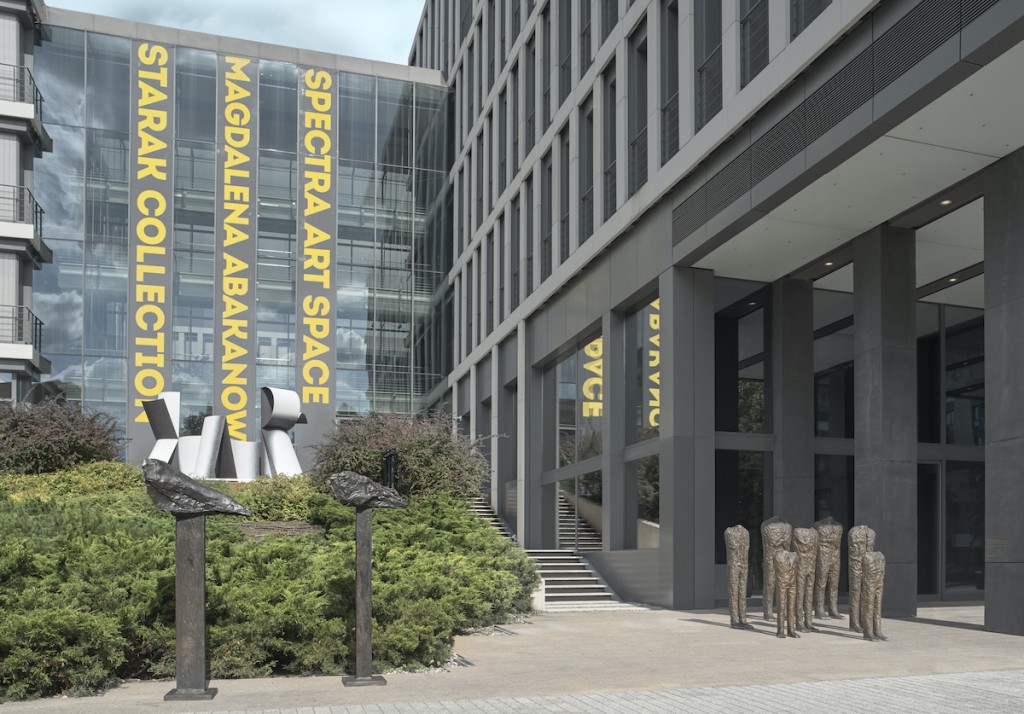
The collection and programming
After over 10 years of experience why is it important for you to share your collection with a wider public?
Jerzy Starak, collector (JS): Above all, art has the power to inspire, educate, and provoke reflection. By making my collection accessible to a wide audience, I can contribute to increasing access to contemporary art, which is especially important to me in an educational context. I am delighted that our initiative allows students, scholars, and art enthusiasts from all over Poland to experience the works of the most significant 20th-century classics. Our exhibitions and guided tours of the collection have always been free of charge.
Organizing exhibitions and supporting artists is not only a way to popularize art but also to foster dialogue between creators and audience. This strengthens social bonds and promotes values such as creativity, innovation, and openness to diversity. Moreover, the art I collect and present becomes part of our shared history and identity. This ensures that future generations will have access to a rich repository of works that reflect our contemporary world and its diverse facets.
Finally, sharing my collection is a source of personal fulfillment and satisfaction for me. Seeing people enjoy art, their reactions, and interpretations bring me immense joy and motivate me to continue my efforts on that field.
How many artworks do you own and how many of them are displayed in the Spectra Art Space? How often do you rotate the display?
Ania Muszyńska, Starak Collection curator (AM): The publicly accessible part of the private collection of Anna and Jerzy Starak, known as the Starak Collection, is dedicated to Polish art of the second half of the 20th century. It comprises nearly 700 works by over 100 artists. With each significant new acquisition, we strive to display it within the building spaces. However, the exhibition space on the ground floor is the most crucial. It allows us to create important narratives, sometimes historical, sometimes current. On average, we organize three exhibitions per year. The collection serves as the starting point, but we often supplement it with loans from other private and museum collections. The exhibitions are open daily, with free admission. On Saturdays, we conduct guided tours of the exhibition and collection, which remain consistently popular.
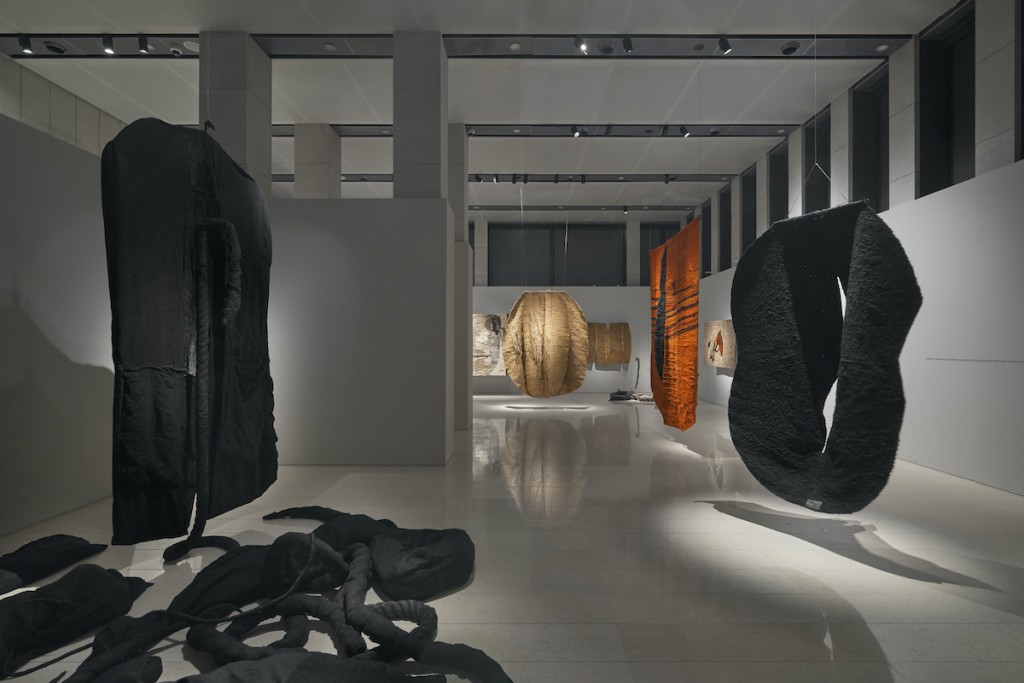
How much do you involve in the programming as well as the curating of exhibitions in Spectra Art Space?
JS: In business, I like to surround myself with professionals and passionate people. The same goes for Spectra Art Space. I have great confidence in Ania and her team. I do not directly interfere with the program. I attend the curatorial tour as the first guest, and I am always impressed by the concepts and the ways objects are juxtaposed. Ania sometimes requests additional works from our private residences, and it’s fascinating to see them in different contexts.
I would like to highlight that Ania pays particular attention to the representation of female artists in the collection as well as in their exhibitions at Spectra Art Space. These are important choices for me as well.
Additionally, I am pleased that, beyond presenting the classics from our collection, we have been running the SOON_ project for over 10 years, dedicated to the youngest Polish artists. In all areas of my activity, I support the young, whether through the Starak Family Foundation or the Polpharma Scientific Foundation, where we support young scientists.
How is the relationship between the two of you as founder and curator of the collection?
AM: Our relationship as founder and curator of the collection has lasted over 15 years and is based on mutual respect and shared passions, especially for post-war Polish art. Over these years, we have built a solid foundation of trust that allows for fruitful collaboration. We often have lively discussions about specific paintings—these conversations are always inspiring. I always strive to listen to the collector’s opinion, knowing exactly what he likes, and carefully selecting proposals for the collection. I greatly value his intuition.
There are, however, moments when I feel that certain works could enrich our collection, and I then try to persuade to make a purchase. This ensures that our collection is not only coherent but also rich in important themes that might not be immediately apparent. Ultimately, the final decision always rests with Mr. Jerzy.
Today, I can say that the Starak Collection is one of the most important private collections in Poland. Without a doubt, we aim to set standards in Poland and demonstrate the importance of professional collaboration between collector and curator.
An important goal of our activities is to create the figure of the collector. Collecting is not just about amassing objects or making investments but involves multifaceted cultural activities. At this juncture, I would like to once again congratulate Anna and Jerzy Starak, who just a few days ago received one of the most prestigious national awards in Poland in the field of culture, the “Gloria Artis Golden Medal for Merit to Culture,” from the Minister of Culture and National Heritage. This is an important gesture and recognition of private patronage.
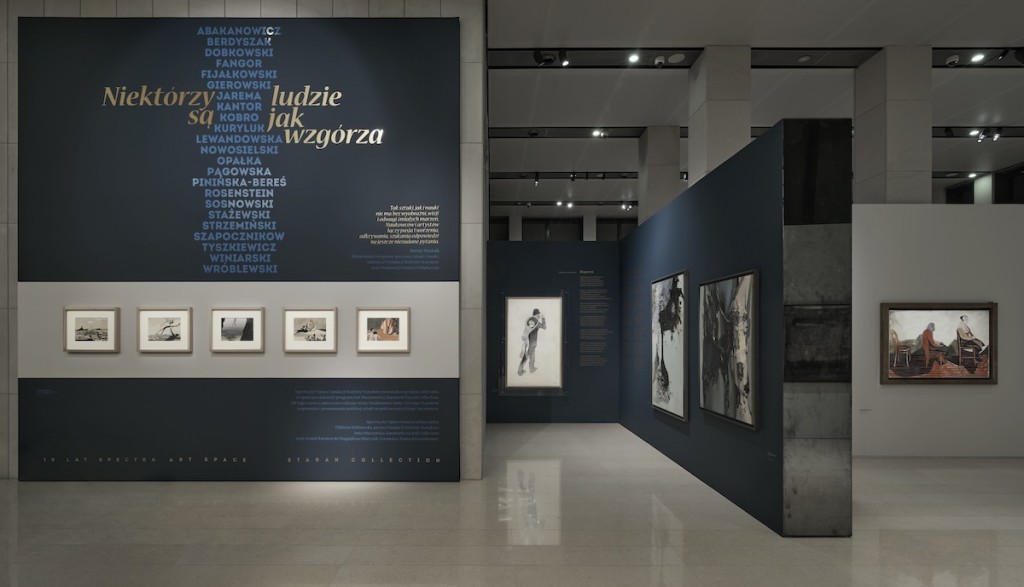
As curator of the collection, what challenges have you faced and how did you overcome them?
AM: I have faced numerous challenges, especially in the early stages of establishing an independent private cultural institution in Poland, at a time when there were few such examples. Since the early 2000s, I knew that such solutions were the future for contemporary art and its promotion. It was only my encounter with Mr. Jerzy and his trust that allowed me to build an institution modeled on global practices. This was personally the most important achievement for me.
The public quickly appreciated our work. However, public institutions needed a bit more time to be convinced to collaborate with us. From the beginning, it was crucial to establish and build public-private partnerships based on equality. We did not want to be merely sponsors; our mission was to create an engaged, responsible, and substantively prepared patronage. We succeeded in achieving this, and I believe it has benefited all parties involved.
Let me provide an example: one of the most important paintings in Mr. Jerzy’s collection, “Afterimage. Woman in the Window” by Władysław Strzemiński, is currently displayed in the permanent exhibition of Polish contemporary art at the Four Domes Pavilion, a branch of the National Museum in Wrocław. It will remain there for the next six months. Meanwhile, in Venice, we are presenting one of Andrzej Wróblewski’s last paintings, “Shadow of Hiroshima,” from the Wrocław collection. Additionally, the National Museum in Warsaw has lent us the painting “Mothers – Anti-Fascists.” Both paintings, considered among the most important for post-war Polish painting, were long regarded as almost “unloanable” due to their artistic value and were rarely loaned by museums. Years of our professional work and the scope of our international activities have allowed us to secure these works for the Venetian exhibition.
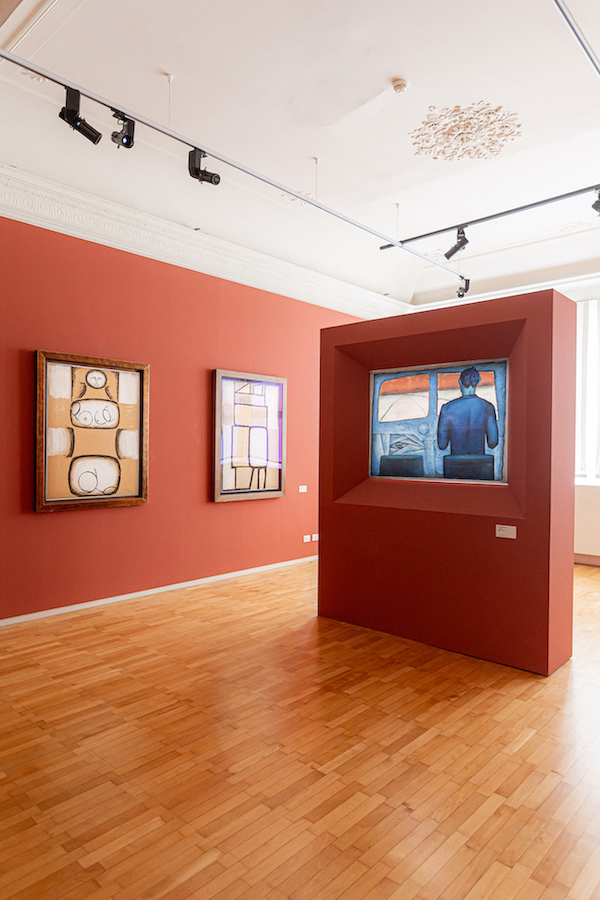
You are currently showcasing Andrzej Wróblewski’s work in Venice. What is special about his work?
AM: Andrzej Wróblewski is one of the most important and outstanding painters of the second half of the 20th century in Poland. In writing about Wróblewski, I coined the term “Substantial Realism”, a form of realism that successfully embraces abstract and ambiguous content while not disregarding the achievements of the avant-garde. He worked with a preference for the rigor of figuration, giving strength and essential meaning to each figure and object. He chose the impactful force of figuration with a full awareness of the dominance of abstraction in the year he debuted, 1948. As an artist, he was brave and paid the price of misunderstanding and even many years of obscurity. He left behind a bold, revolutionary, and daring oeuvre, including monumental series for Polish art such as “Executions”, “Chauffeurs”, “Queues”, “Chaired”, “Tombstones.” Together they constitute a nearly monumental image of an artist overtaken by post-catastrophic and dystopic visions, whose personal fate was marked by the experience of World War II and the terror of Stalinism in Poland. He died suddenly during a mountain trip in March 1957, shortly before his 30th birthday. Therefore, he created for barely ten years, yet left a body of work that remains a challenge for successive generations of artists.
Andrzej Wajda (1926-2016), a distinguished Polish film director and a friend of the artist, considered Wróblewski the greatest artist of their generation, a genius to whom he paid homage repeatedly in his films. Wajda often said he took up filmmaking primarily because he knew he could never be as good a painter as Wróblewski. I genuinely encourage everyone to visit it and engage with the story of art created in times of enslavement, constraints, and restrictions, confronted with the uncompromising nature and bravery of a young man.
What is the significance of showing Andrzej Wróblewski’s work now in Venice?
JS: Presenting Andrzej Wróblewski in Venice has been a lifelong dream of mine. Experts suggest that if Wróblewski had been shown at the Biennale earlier, he would have long been recognized as a global artist. I felt compelled to undertake this endeavor myself. It was of utmost importance to me that this exhibition be extraordinary, and I am proud that it was chosen by curator Adriano Pedrosa for the official collateral events section of the Biennale Arte 2024.
AM: Wróblewski’s work is now attracting the attention of curators and museum professionals worldwide. For over a decade, the Andrzej Wróblewski Foundation has been successfully working with his oeuvre. Following exhibitions at the Van Abbemuseum in Eindhoven, the Museo Nacional Centro de Arte Reina Sofía in Madrid, and the Museu Nacional d’Art de Catalunya in Barcelona, it is now time for the Venice Biennale.
We hope that the presentation in the very heart of Venice, at St. Mark’s Square, which is visited by nearly 30 million people annually, will open new pathways for accessing this extraordinary body of work. As Elżbieta Dzikowska, president of the Starak Family Foundation, the woman whose efforts have given such momentum to our endeavors and a personal admirer of Wróblewski’s art, repeatedly says, “Wróblewski’s genius deserves a permanent place in the canon of global art of the second half of the 20th century, inviting new interpretations and confrontations with the greatest names of that era.”
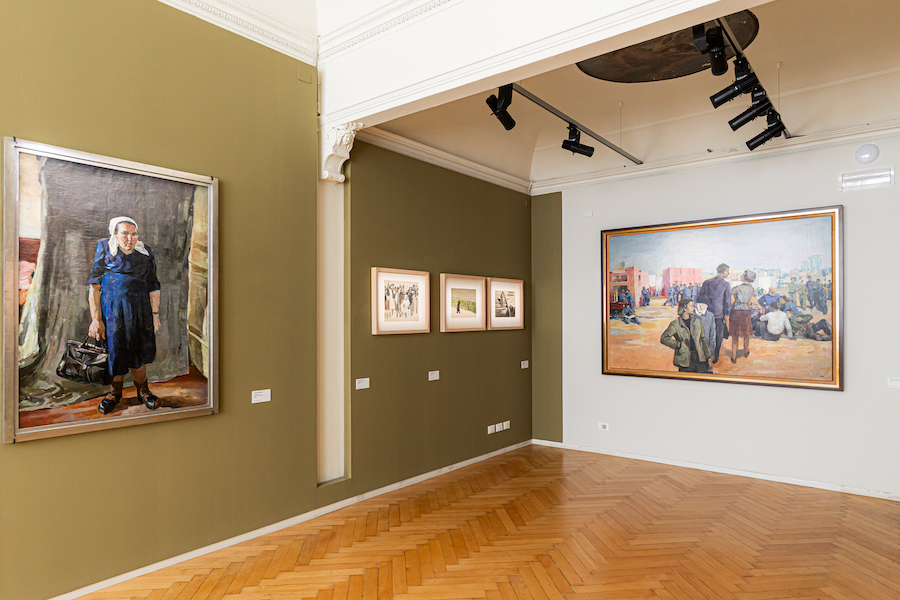
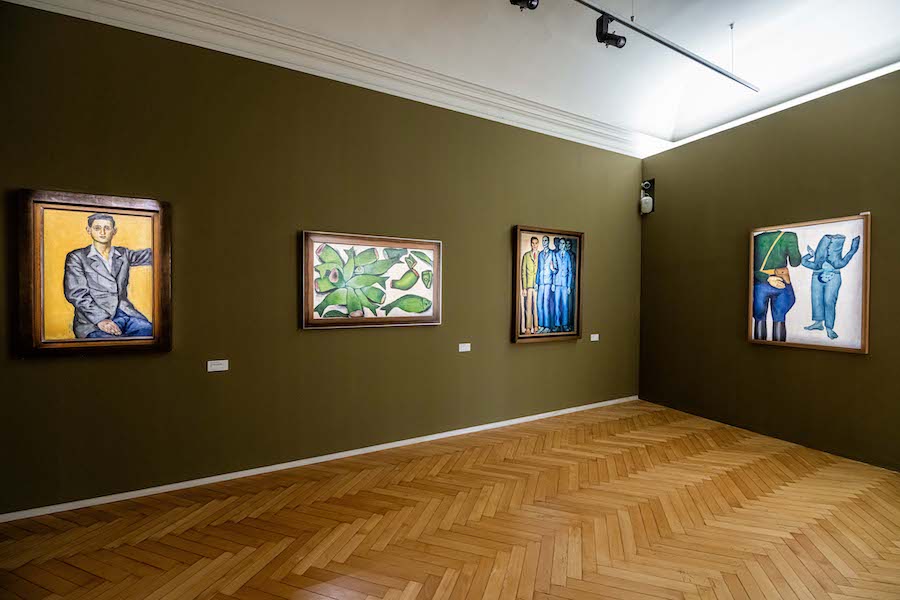
How did you come up with the exhibition theme and title of “In the First Person”?
AM: “In the First Person” means living on one’s own terms, with full responsibility and a keen awareness of the consequences. It signifies an uncompromising journey down an uncharted path. Such bravery required numerous transgressions, especially in Wróblewski’s era, a time fraught with immense existential fear for survival. Born in Vilnius in 1927, a city now in Lithuania but then within Polish borders, Wróblewski grew up in an intellectual salon, a home brimming with discussions about art and philosophy. After the war, the world he once knew vanished. Together with his mother and brother, after a three-month odyssey, they arrived in Kraków as repatriates. His father, a law professor and rector of the University of Vilnius before the war, perished before their eyes during a Gestapo raid on their home. Thus, Wróblewski’s artistic stance is deeply intertwined with his harrowing childhood and early youth experiences, as well as the intellectual ethos of his upbringing. Consequently, Wróblewski sought a form of artistic literalness. He deemed it essential for the existence of his art, his style, and his unique position. This demand arose from his profound awareness of the time and place in which he created, his inherent bravery, and his often expressed need to take responsibility for every artistic decision. In numerous writings, both critical and personal, intimate notes and diaries, he spoke with clarity and without ambiguity:
“It must be so! In my practice, I need to preserve, and first seize, a royal generality, and all-encompassing – cognoscibility; in it, I need to encompass everything, that which I have experienced, and a great deal of that which I only know (from books, stories), and finally, and even more of that which I do not know, but which has to be inside of me, because I am a son, a Pole, an intellectual, a frequent friend, a passer-by, a consoler.” (Avoiding Intermediary States. Andrzej Wróblewski (1927 – 1957), edited by M. Ziółkowska, W. Grzybała, Warsaw 2014, p. 78)
What are the challenges of and insights from organising such a project?
AM: All the exhibitions, both in Warsaw and Venice, are curated by our Spectra Art Space team, including the arrangement and architectural aspects. The Procuratie Vecchie is one of the most famous and recognizable buildings in Venice, surrounding St. Mark’s Square on three sides. Our exhibition space occupies a section of one of the facades, right next to the renowned clock tower. We can see St. Mark’s Basilica from the windows. It is an expansive venue, with four large enfilade rooms and several historic chambers. One of the rooms is arranged as a chapel. I wanted to establish a quiet, mystical place for the contemplation of a few select works by the artist. Beyond the exhibition arrangement, we have been working intensively on the conservation of the objects for months in advance. We decided that all works from our collection—oil paintings and works on paper—would undergo conservation. Especially the works on paper need to be professionally secured using the latest conservation techniques, particularly for such a prolonged exhibition. Venice is a very special place of us; this is our fourth exhibition during the Biennale. Therefore, we have extensive experience with the logistics and coordination of an exhibition here, although I must admit that the sight of paintings packed in crates, traveling by barge through the Canale Grande, always leaves a strong impression on me.
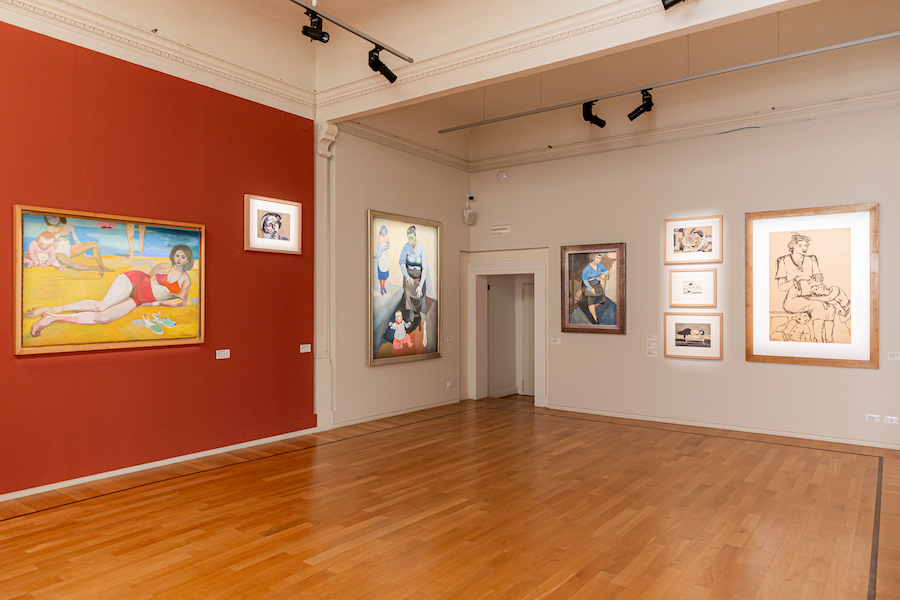
What are the special programs in 2024 that we should definitely not miss out on?
AM: In 2024, our exhibition in Venice, running until November 24th, is an event that cannot be missed. The reception of this event in Poland has already been exceptionally positive, and we hope it will be similarly well-received on a global scale. Our exhibition was ranked among the top ten collateral exhibitions at the Biennale by The Art Newspaper, which is a significant recognition. After the Biennale, we will present Andrzej Wróblewski’s exhibition in Warsaw at Spectra Art Space. I know that it is eagerly anticipated. The relationship between Mr. Jerzy Starak and Wróblewski’s work is a prime example of the unique emotional and intellectual connection a collector can have with an artist’s oeuvre. It is worth noting that Mr. Jerzy is the owner of the largest collection of Wróblewski’s works, both among private and public collections. The Warsaw edition will differ slightly from the Venetian one, and I can say that it will feature several premieres.
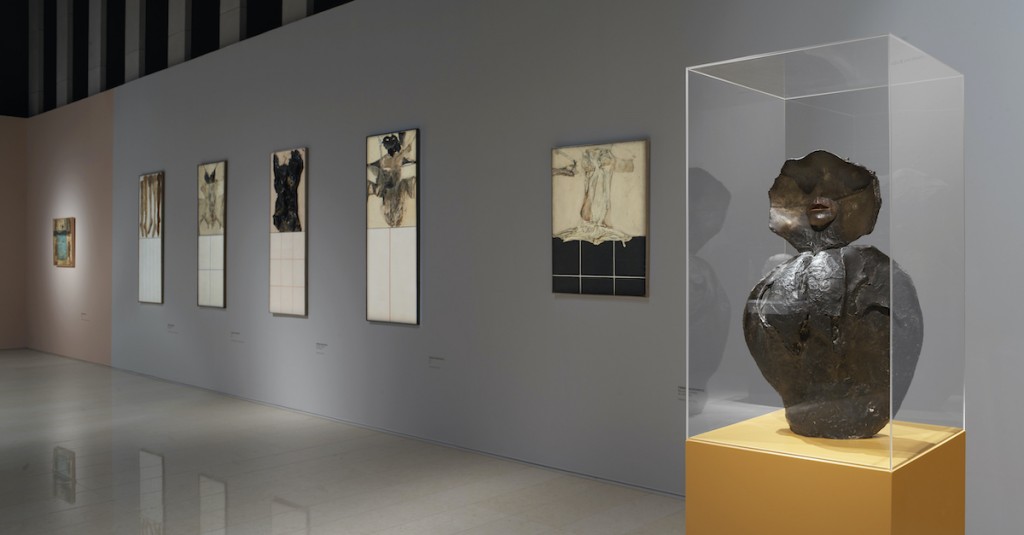
Memories and visions
What was your happiest or most memorable moment since your foundation has been set up?
JS: One of the happiest and most memorable moment, from a perspective of over 15 years, was when we witnessed the comprehensive achievements of our work. To celebrate Spectra Art Space’s 10th anniversary, we organized a reception and presented a film summarizing our activities—a joy to watch. The numerous exhibitions, publications, and all editions of the Biennale we participated in, especially our projects supporting high school art students, exceptionally talented university students, and young artists—all woven into one narrative—continue to impress me. The film is presented at the entrance to the exhibition in Venice. One of our greatest successes has been all the exhibitions in Venice so far, showcasing our significant impact on the international art scene while upholding our mission to support and promote Polish art.
For me, what remains most important is that we’ve had the opportunity over these years to observe the development of many young talents, which gives us immense satisfaction and motivates us to continue our work. This is the focus of the SpectraEdu department of the foundation, established a few years ago, and their “Wena” project dedicated to high school art students in Poland. We are now also developing a new project called Kunszt, dedicated to craft and design. Both projects were initiated by my wife Anna.
What do you think are the key elements that determine the success of an art foundation?
JS: As the founder, I believe that the key element is a clear mission and vision, which serve as the foundation of our activities. It was, among others, Ania Muszyńska who convinced me to build the program based on the classics of Polish post-war art. Of course, I can collect and present global art, but why duplicate a scheme where “the cards have already been dealt long ago”? For curators from around the world, it is Polish art that can be, and as it turned out, is interesting. Our foundation has the chance to add an important voice to the global artistic discourse, while promoting the works of those who deserve recognition and rediscovery. Such artists include, of course, Wróblewski, but also Alina Szapocznikow, Ryszard Winiarski, Maria Jarema, Tadeusz Kantor, and Edward Krasiński. I believe that another important matter is building a network of contacts and cooperation—with other foundations, museums, and private collections. Thanks to this, works from the Starak Collection are presented at various exhibitions in Poland, very intensively, but also worldwide.
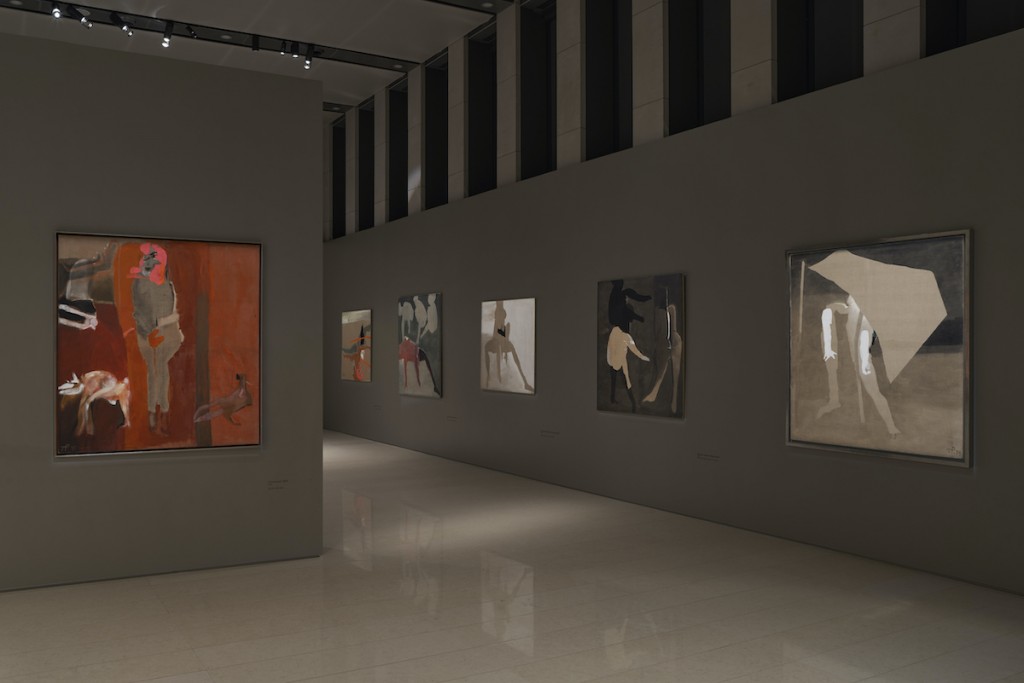
What are your visions for your Art Space in the next five and ten years respectively?
JS: Spectra Art Space is an important, independent, and professional cultural institution. However, it is not a museum. Today, I can confirm with full responsibility that in Obory near Warsaw, on an estate that includes a beautiful park, a palace, a granary, a brewery, and other buildings, a center for the charitable activities of the Starak Family Foundation will be established, as well as a museum of modern and avant-garde art. We will present, among other, works from our collection. This is an extension of the activities we have been conducting for over 10 years, as I mentioned, in the office building on Bobrowiecka Street in Warsaw. I hope that we can arrange another conversation on the occasion of the opening quite soon.
What is your advice to other art collectors who may be thinking about building an art museum?
JS: First of all, collect not only artworks but also phone numbers of top specialists in their fields, because the team is the most important. You need people with knowledge and experience in various areas—from promotion to education to the technical department. The last few years at Spectra Art Space have been intense while what is happening at the project level in preparing the museum in Obory is truly challenging. I think I will be able to fully answer this question after the opening.
Exhibition information:
Andrzej Wróblewski (1927-1957) In the First Person
Collateral Event of the 60th International Art Exhibition – La Biennale di Venezia
April 20th– November 24th, 2024
Procuratie Vecchie, Piazza San Marco 139 – 153/A 30124 Venice
Curator: Ania Muszyńska
Copyright to the art works of Andrzej Wróblewski: © Andrzej Wróblewski Foundation / www.andrzejwroblewski.pl
Related: Starak Family Foundation
Instagram: @starakfamilyfoundation
Interviewed and edited by Ricko Leung





